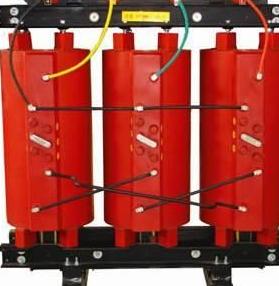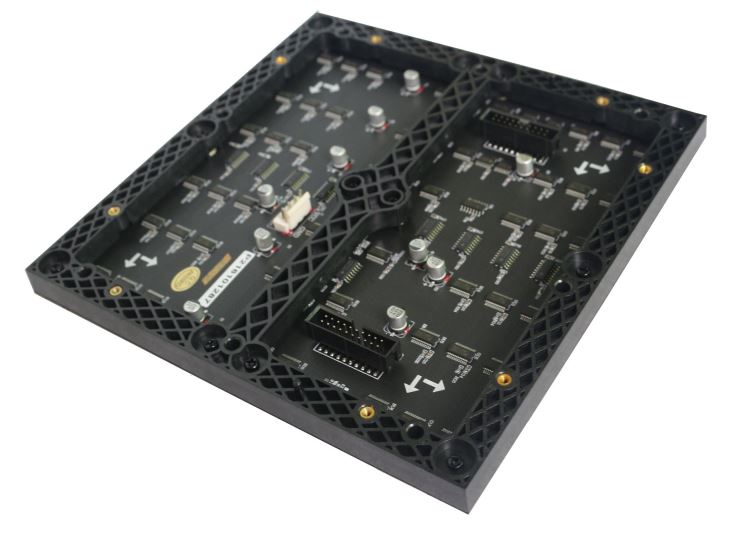
However, it is understood that energy-saving transformers are also in urgent need of solving some problems in their own development. Such as improving the functional stability and resistance to short-circuit capability. In addition to technical issues, testing standards and testing methods still lag behind product development, and lack of product performance evaluation and rating systems and tools that can reflect different design levels and manufacturing processes.
At present, under the background of the state's efforts to promote energy conservation and emission reduction, both the State Grid and China Southern Power Grid have replaced energy-saving transformers as a major measure to reduce power grid losses. This has brought many market opportunities for energy-saving transformer manufacturers, even for the entire energy-saving transformers. The market also has a guiding and reshaping role.
An expert in the energy-saving potential of transformers National Transmission and Distribution Technology Network said that transformers are the key electrical equipment for power transmission. Because of the large number of transformers, the power consumed by the transformer itself is also considerable. Relevant data show that, at present, all the transformers in China consume 3% to 10% of the electricity generated in the country. In the loss of distribution network, transformer losses account for 40% to 60%. The potential for energy saving is huge.
In May 2014, in accordance with the requirements of the “12th Five-year Plan for Energy Saving and Emission Reductionâ€, during the 12th Five-Year Plan period, the loss of power transformers was reduced, with no-load loss reduced by 10%-13% and load loss by 17%-19%. Therefore, The implementation of energy-saving product replacement for high-energy-consuming transformers in the network has become an industry trend.
It is understood that energy-saving distribution transformers include amorphous alloy core transformers, capacity transformers, etc. Such as amorphous alloy transformer, is an energy-saving transformer developed in the 70s of last century. Due to the use of a new amorphous alloy of soft magnetic material, the performance of amorphous alloy transformers surpasses that of conventional silicon steel transformers. It is estimated that the amorphous alloy transformer will reduce the no-load loss by 80% compared with the traditional silicon steel transformer, and the no-load current will drop by about 85%. This is an ideal distribution transformer with good energy-saving effect, but it does not have the price and raw material supply. Advantage.
The market is still not fully activated. Industry sources have told reporters that the current energy distribution transformer market in China is scattered, coupled with low industry barriers, uneven business, lack of identification and standards, and inadequate technological innovation and other factors, leading to slow promotion of energy-saving transformers.
According to reports, China's transformers have undergone several series of alternative processes such as S7, S8, S9, S10, and S11. As early as the mid-1980s, the Chinese government made mandatory use of the S7 series of low-loss distribution transformers to eliminate the JB1300-73 and JB500-64 standard high-energy-consuming transformers that were operating on the grid at the time. Since 1998, the urban and rural power grids have been transformed throughout the country, and the S7 series of distribution transformers have been used instead of the S7 series. In recent years, S13 and S15 products have been widely used in the transformation of national urban networks and rural power grids, and their no-load losses have been reduced by 50%-80% compared with S9-type transformers.
In order to promote the application of energy-saving transformers, the Ministry of Finance, the Ministry of Industry and Information Technology and the National Development and Reform Commission jointly issued the "Implementation Rules for the Promotion of Energy-Saving Products Huimin Engineering High-Efficiency Energy-Saving Distribution Transformers" as early as 2012, and carried out energy-saving transformers at 4 to 30 yuan/kV. An's financial subsidies.
A person in charge of a transformer manufacturer told the reporter that due to factors such as raw materials, the cost of energy-saving transformers was significantly higher than that of traditional transformers, and price factors were also the main factors affecting the popularity and promotion of energy-saving transformers. Although the energy-saving Huimin Subsidy Project supports efficient energy-saving transformers, the market has not yet fully started up.
In fact, in addition to financial support, the industry has also been trying to promote the upgrading of energy efficiency of transformer products through the development of standards.
Zhao Yuejin, a senior engineer at the China National Institute of Standardization, witnessed the improvement of the energy efficiency standard for transformers. According to its introduction, the revision of the GB20052 standard completed in October 2012 improved the level of energy efficiency limit values ​​and the level of energy conservation evaluation values. In 2013, the Standardization Administration of the People's Republic of China issued the GB20052-2013 "Energy-saving limit value and energy efficiency rating of three-phase distribution transformers" announcement, and implemented it on October 1, 2013. In the past, distribution transformers were divided by S7, S9, S11, etc. The era was divided, and whether or not transformers were rated as energy-efficient was divided into one, two, and three levels of energy efficiency, and energy efficiency standards started a new era of energy-saving transformers. The new energy efficiency standards put forward higher energy efficiency requirements for products, and it is also expected to change the market structure of transformers.
Or into a breakthrough in the industry difficulties China's transformer industry is large, but SMEs are mostly concentrated, the degree of concentration is not high, manufacturers are more dispersed. Overcapacity and hidden quality problems have become industry dilemmas that the transformer industry cannot ignore.
According to the research report of China Research Institute and Puhua, in recent years, China's transformer enterprises have been operating in a low-efficiency environment, and the phenomenon of overcapacity is particularly serious. The annual transformer demand in China is about 1.5 billion kVA, while the transformer industry capacity is about 3 billion kVA.
An expert from the National Center for Supervision and Inspection of Low-voltage Power Distribution Equipment Quality Supervision and Testing Center told reporters that the promotion of energy-saving transformers will not only effectively help energy-saving and emission reduction, but more importantly, it can open up a breakthrough for the transformer industry, which is deeply stuck to the overcapacity situation. Double effect.
However, it is understood that energy-saving transformers are also in urgent need of solving some problems in their own development. Such as improving the functional stability and resistance to short-circuit capability. In addition to technical issues, testing standards and testing methods still lag behind product development, and lack of product performance evaluation and rating systems and tools that can reflect different design levels and manufacturing processes.
Short Description:P2mm Indoor LED Module,256mmx128mm P2mm Indoor LED Panel with 128x64 pixels. Model:ERALED-P2-Indoor-128X64; 5 Years Warranty with NICHIA/CREE/NATIONSTAR/EPISTAR/SILAN gold wires LED lamps,1.6cm thickness PCB,MBI5153 Driving IC ;UL,CE,RoHS,FCC,3C,ISO Approved;
Fine pitch Indoor LED Module
256x128mm,128x64 pixels RGB full color SMD UHD P2mm Indoor Led Display Module |
||
|
Module Specifications |
||
|
1 |
Pixel Pitch |
2mm |
|
2 |
Pixel Configuration |
SMD3in1 |
|
3 |
Module Resolution |
128x64 pixels |
|
4 |
Module Pixles |
25,000 pixels |
|
5 |
Module Size |
256x128mm |
|
Specifications |
||
|
1 |
Screen Brightness |
≥1000cd/m2 |
|
2 |
Driving Method |
1/32 scan |
|
3 |
Mini Viewing Distance |
2m |
|
4 |
Max. Power Consumption |
750W/m2 |
|
5 |
Average Power Consumption |
320W/m2 |
|
6 |
Gray Level |
14bits input, 4096 levels(212) |
|
7 |
Display Color |
16M |
|
8 |
Frame Frequency |
≥60Hz |
|
9 |
Refresh Frequency |
≥1920Hz |
|
10 |
Uninterrupted Working Hours |
≥72 hours |
|
11 |
Screen Life-span |
≥100,000 hours |
|
12 |
MTBF |
≥5,000 hours |
|
13 |
Discrete Blind Spot Rate |
<1/10000 |
|
14 |
Continuous Blind Spot Rate |
None |
|
15 |
Blind Spot Rate |
<1/10000 |
|
16 |
Screen Plainness |
<±1mm |
|
17 |
Power Supply Mode |
AC220±10% 50Hz/AC110±10% 60Hz |
|
18 |
Environment Temperature & Humidity |
Temperature:-20 Celsius~+60 Celsius |
|
19 |
Control Mode |
Synchronous display with control PC by DVI |
|
20 |
Control System |
DVI video card + full color control card + fiber system( optional) |
|
21 |
Display Content |
Video, DVD, VCD, TV, picture, cartoon, graphics, texts.etc. |
|
22 |
Interface |
Standard Ethernet |
|
23 |
Transmission Distance |
Multi mode fiber <500m, single mode fiber <30km,internet cable <100m |

Fine pitch Indoor Led Module
High Power Led Module,Soft Flexible Led Display Screen,Pitch Led Display Screen,Curved Led Display Screen
Shenzhen Joy LED Display Co., Ltd. , https://www.joe-led.com